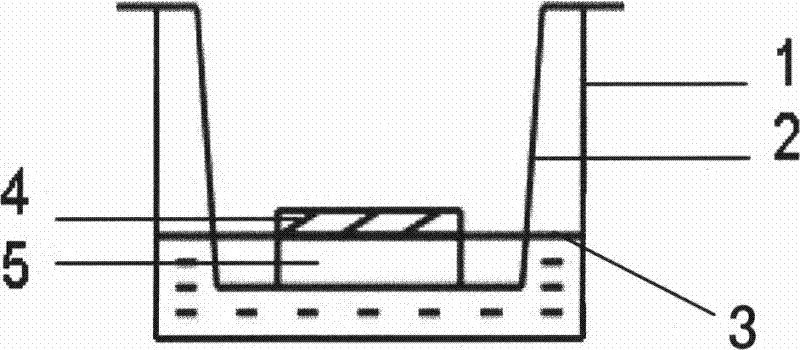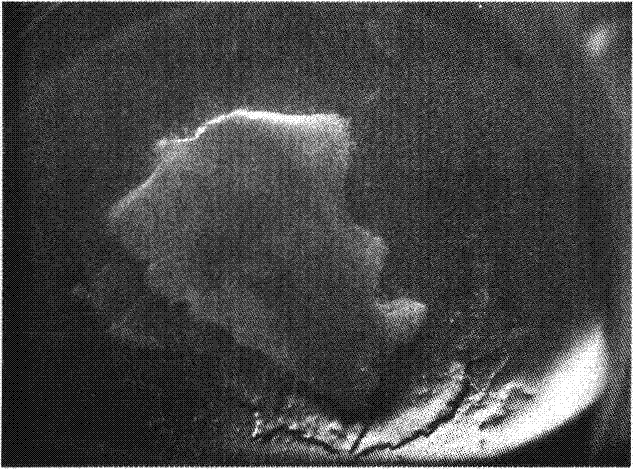Construction method for dry eye model in vitro
An established method, dry eye technology, applied in the research and prevention of dry eye, simulation field, can solve problems such as lack of histology, and achieve the effect of low price, high repeatability and simple production
- Summary
- Abstract
- Description
- Claims
- Application Information
AI Technical Summary
Problems solved by technology
Method used
Image
Examples
Embodiment 1
[0039] The preparation method of the dry eye model established by conjunctival tissue cultured under the air-liquid interface environment of the present invention, its specific steps are as follows:
[0040] ①The bulbar conjunctiva and subconjunctival tissue of the donated cadaver eye obtained from the eye bank were cut out, washed 3 times with phosphate buffered saline (PBS) containing antibiotics, and placed in epithelial cell culture medium (SHEM medium) added with 3X antibiotics 30min, and then transferred to SHEM medium containing common antibiotic concentrations for later use.
[0041] ②Coat the bottom of the culture dish insert with type I collagen: the collagen concentration is 1mg / ml, and 0.3ml is used in each insert.
[0042] ③ Trim the conjunctival tissue into a 5mm square size, place it in the center of the coated culture dish insert, with the epithelial side facing up.
[0043] ④ Add SHEM medium to the outside of the insert of the culture dish, and keep the liqui...
Embodiment 2
[0047] Conjunctival tissues cultured for 2 to 14 days under the above conditions were frozen and embedded, and frozen sections were performed for histopathological and immunohistochemical staining observations, as follows:
[0048] Main reagents and instruments: mouse anti-human monoclonal anti-keratin K19 antibody, anti-keratin K10 antibody and anti-P63 antibody (Dako, USA), mouse anti-human monoclonal anti-mucin MUC5AC antibody (Abcam, USA), FITC-labeled Goat anti-mouse IgG secondary antibody (Sigma, USA), OCT embedding agent (SAKURA, USA, model OCT4583). Leica CM1850 cryostat (Leica, Germany), Nikon TE2000 inverted fluorescence microscope (Nikon, Japan).
[0049] Hematoxylin-eosin staining: The conjunctival tissue specimens cultured under the above conditions were immediately embedded in OCT at different time points, pre-cooled in liquid nitrogen for 1 min, and stored in a -80°C low-temperature refrigerator. The cryopreserved specimens were made into serial frozen sections...
Embodiment 3
[0054] The preparation method of the dry eye model established by conjunctival tissue cultured under the air-liquid interface environment of the present invention, its specific steps are as follows:
[0055] ① The bulbar conjunctiva and subconjunctival tissue of the donated cadaver eyes obtained from the eye bank were cut out, and after necessary anti-pollution treatment, they were transferred to a medium containing ordinary antibiotic concentrations for later use.
[0056] ②Coat the bottom of the culture dish insert with type I collagen: the collagen concentration is 1mg / ml, and 0.3ml is used in each insert.
[0057] ③Use a trepan drill with a diameter of 7 mm to remove conjunctival tissue pieces of the same size, and place them in the center of the coated culture dish insert with the epithelial side facing upward.
[0058] ④ Add the culture medium to the outside of the insert of the culture dish, and keep the liquid level at the junction of the epithelium and stroma of the c...
PUM
| Property | Measurement | Unit |
|---|---|---|
| diameter | aaaaa | aaaaa |
Abstract
Description
Claims
Application Information
 Login to View More
Login to View More - R&D
- Intellectual Property
- Life Sciences
- Materials
- Tech Scout
- Unparalleled Data Quality
- Higher Quality Content
- 60% Fewer Hallucinations
Browse by: Latest US Patents, China's latest patents, Technical Efficacy Thesaurus, Application Domain, Technology Topic, Popular Technical Reports.
© 2025 PatSnap. All rights reserved.Legal|Privacy policy|Modern Slavery Act Transparency Statement|Sitemap|About US| Contact US: help@patsnap.com



